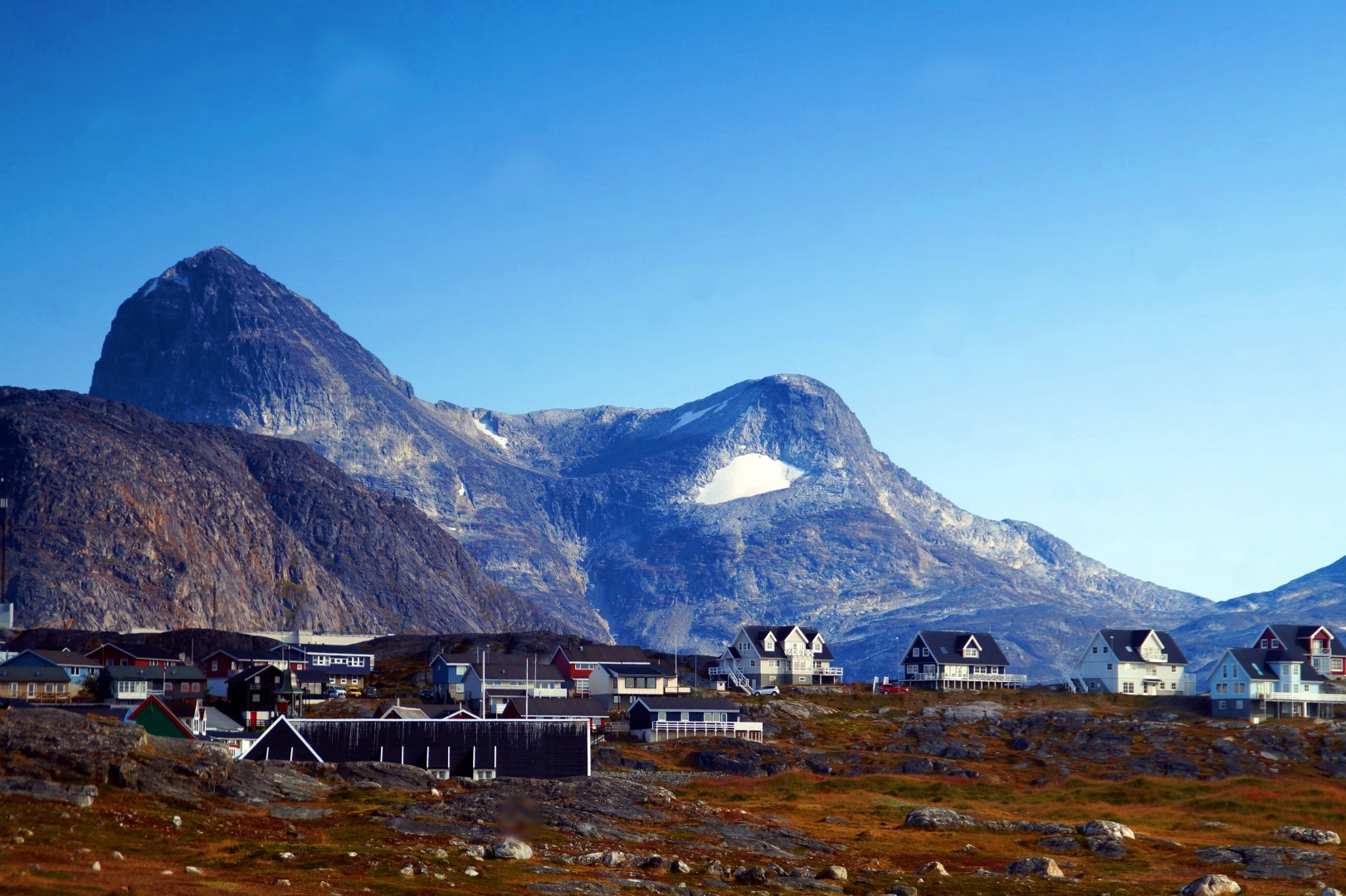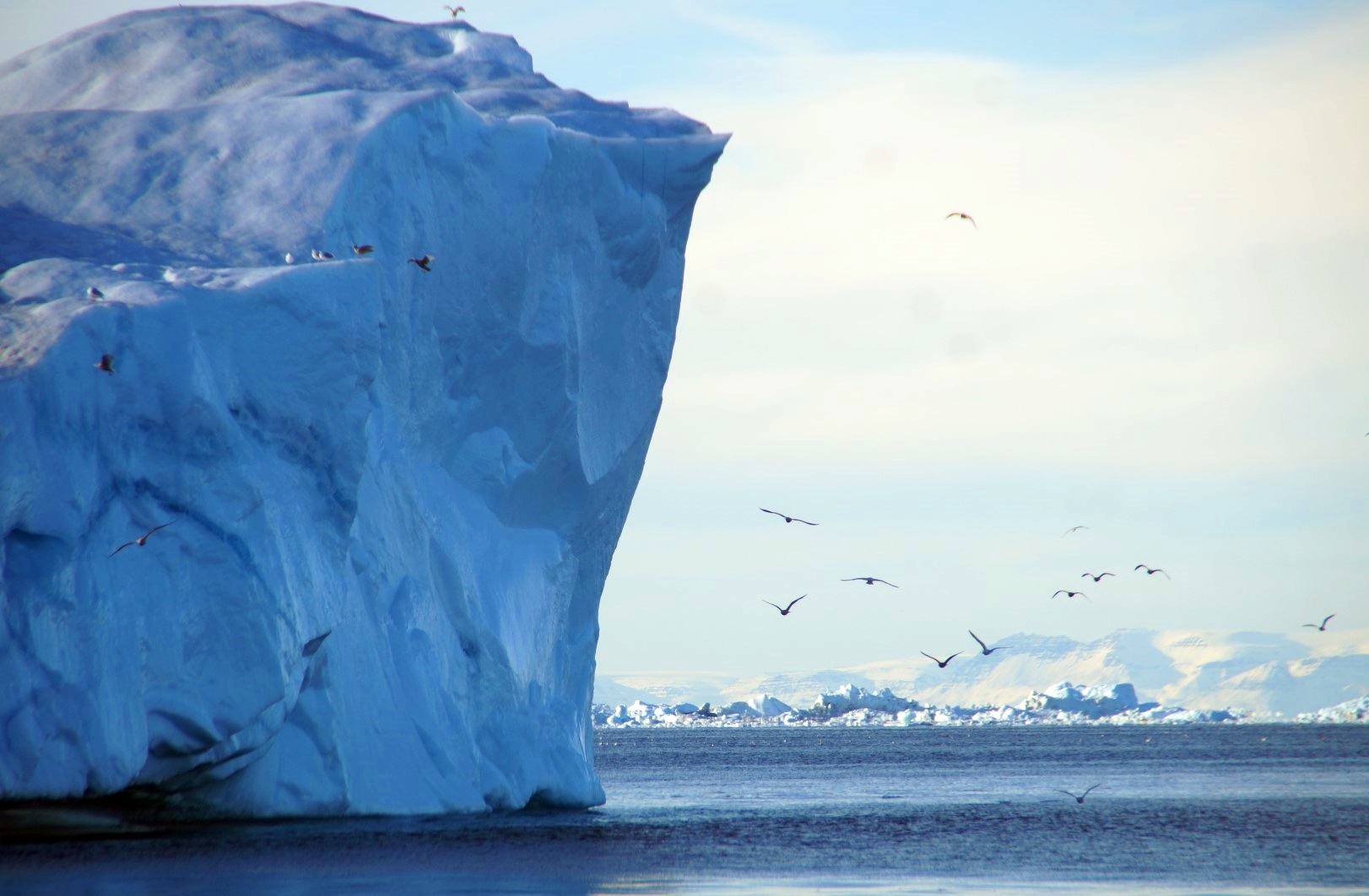On my first day in Narsaq in South Greenland, I woke up early and looked out of the window to a clear, blue sky. I couldn’t believe my luck. I was so excited to get out there, and decided to embark on a loooong hike, which ended up being over 30 kilometers long. Talk about tired legs afterwards!
I had heard about a mine located 10 kilometers outside the city on the Kuannersuit Mountain (also known as Kvanefjeldet), which I decided to walk to. There is a dirt road all the way to the mine, which took me through agricultural lands before going into the mountains of the Ilimaussaq area. This area is noted for its wide variety of rare minerals, with over 200 different and 30 of which were first found there. The minerals include the rare tugtupite, which is only found in this area and on the Kola Peninsula in Russia. I absolutely love tugtupite and was excited to see if I would be able to find some myself.
The first part of the walk went along the shoreline of the Tunulliarfik Fjord. It was a beautiful day and the mountains reflected beautifully in the calm water. I walked to Narsap Ilua, the location of an old Viking Age settlement, but there’s nothing to see anymore. From there, I simply followed the dirt road through the agricultural lands, past two big farms and hundreds of cute cows, which is a rare sight in Greenland! The walk seemed like it was taking forever, and for some reason I wasn’t feeling quite up for it that day – probably because I knew it was so long and I’d have to come back the same long way…







When I was finally almost at the byway to the mine, I met the first person I’d seen all day. He was walking, pulling his bike along over the steep hills. We got talking and I soon learned that he was a stone collector, a settler from Denmark who had chosen Narsaq because of its rare minerals. For the next three hours, I was with him. He told me everything he knew about stones and minerals – and trust me, he knows A LOT! He persuaded me into joining him on his hunt for rare minerals, which I could not say no to! I knew it would be near impossible to find anything by myself, so it was amazing to have an expert to help me!
We climbed over the Narsaq River to the foot of the Nakkaalaaq Mountain at 1207 meters. And then we started climbing up. He had a specific place in mind that he wanted to find, where he knew there would be plenty of minerals, but the large amounts of snow made it hard to find. We ended up over 600 meters up, halfway up the mountain, before he finally gave up and we headed back down. But we did actually find a few minerals, including the tugtupite, although it was too big to carry home. Also, I do believe that it’s best to keep nature intact, so I was fine with leaving it behind.





Back down we went, climbing over waterfalls and drinking the fresh mountain water from them. With my boots full of snow, we finally got back down to the dirt road after a three-hour hunt. It was time for us to go our separate ways, as he had to go home to eat dinner with his wife and I still wanted to visit the mine.
So up to the mine I went. It was a tough climb up there through a steep winding road that was completely snow-covered. At one point, I couldn’t feel my feet anymore as they were so cold, but I just had to continue. And finally I got there, to the old mine, located on the controversial Kvanefjeld, which has become one of the main topics in the Greenlandic media in recent years. The mountain is thought to be the world’s second-largest deposit of rare-earth oxides and the sixth-largest deposit of uranium. The occurrence of large amounts of uranium and the plans for an open pit mine has become a highly debated topic, as it on the one side would benefit the economy of Greenland, but on the other side, there are fears of radioactive dust falling on the surrounding areas, making it impossible to live and farm on the neighbouring lands. Ultimately, this would result in the abandonment of many villages and farms in a historically important area, which has been inhabited for over a thousand years and holds many remnants from the Norse, the first farmers of the land (ca. 985 to 1450 AD).
Unfortunately, the mine was completely shut off by an enormous steel door. Before going on the hike, I actually thought it was possible to go inside the mine, but my new friend told me they had closed it off several years ago because of toxic radioactivity. So there would be no mine exploration for me.





The long walk back to Narsaq began. I walked and walked, and it seemed like the village never came any closer. But finally, 2,5 hours later, way after the sun had set, I made it. I was in Narsaq at last.
I had arranged with my friend to meet him at his house, so he could show me some of his stones. We talked about stones and geology over a cup of tea, and he gifted me with THREE amazingly beautiful minerals that he had found in the area! He gave me a beautiful tugtupite (!) and both a polished and an unpolished sodalit, which is an even rarer mineral than tugtupite. A girl could not possibly wish for anything more.



An amazing, yet tough day was over. I had walked over 30 kilometers and I was exhausted to say the least, but it had been completely worth it, especially because I met a new friend who shared his huge knowledge on Greenlandic minerals with me.



Leave a Comment